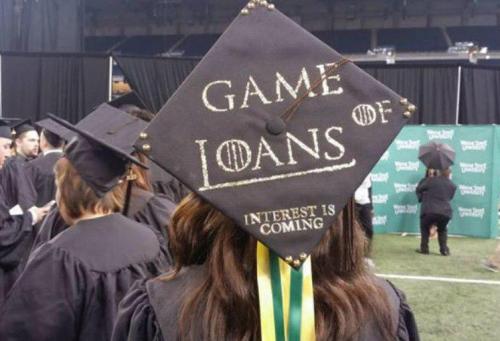 Do you need a student loan? Do you know what kind of student loan you want?
Do you need a student loan? Do you know what kind of student loan you want?
Student loans are a confusing subject. And these days, most college students are relying on student loans to help meet the rapidly rise of cost of attendance at colleges and universities nationwide –but before you sign any promissory note, you should know that not all student loans are created equal. In fact, there are many different types of student loans with varying benefits, protections, and costs.
Of course, you should always use sources of financial aid such as scholarships and grants before student loans. But for the 7 out of 10 students who need loans, it’s important to know the differences between different options. Why? Because knowing them is the first step to responsible borrowing.
Federal Student Loans
About 90% of the $1.64 trillion in outstanding student loan debt is known as federal student loan debt. As you might expect, federal student loans are offered and managed by the federal government. There are a number of different types of federal student loans including Stafford Loans, Perkins Loans, and PLUS Loans.
Stafford loans are the most popular type of federal student loan and come in both subsidized and unsubsidized varieties. Unlike the unsubsidized loans, subsidized federal student loans don’t accumulate interest while you’re taking classes. For this reason you should always use subsidized student loans before borrowing with an unsubsidized loans. Student loan interest can get expensive, and it will get even more expensive if you let interest compound; the good news is there’s no need to worry about compounding interest with subsidized student loans.
Parents can also borrow with federal student loans under the Parent Loans for Undergraduate Students Program also known as PLUS. Parents are eligible for PLUS loans even without good credit.
The amount of federal financial aid you qualify for is determined when you submit the Free Application for Federal Student Aid, or FAFSA. All federal student loans come standard with a fixed interest rate and 10-year repayment term.
Private Student Loans
Private student loans are intended to fill the gap between financial aid and the cost of attendance. Private student loans work much like federal ones. Even so, you should always use private student loans second to federal offers.
Private student loan interest rates is a function of of your creditworthiness. About 90% of students will need the help of a cosigner for private student loan approval. As a rule of thumb, private student loan rates are typically higher than federal loans. However, some private student lenders actually offer lower rates than the feds.
Private student loans are customizable. Borrowers can usually select their interest rate type, repayment plan, and a term length. To apply for private student loans, you must apply online with the lender.
Choosing a Repayment Plan
A repayment plan is your roadmap to repaying your student loan debt. Federal student loans come with a 10-year repayment term.
In contrast, private student loan lenders offer many different repayment plans. There are interest only, full principal, and even full deferment plans. If you select a deferment plan, your payments and interest add to the balance of your loan while you’re in school. If you select an interest-only plan you’ll only make interest payments while you’re in school. Interest-only plans usually have lower rates and you’ll save yourself thousands of dollars over the life of your loan.
You may be able to choose your term length too. The term length is the amount of time to repay your loan. The shorter the term, the faster the repayment, and the lower the cost. The longer the term, the slower the repayment, and the higher the cost. Shorter term lengths usually have lower interest rates in comparison to longer term lengths. Make sure to consider your expected income upon graduation when selecting a term. The shorter the term, the higher your monthly payment after graduation.
Choosing an Interest Rate
Federal student loans only have fixed-interest rates. Fixed rates usually start about 1.50% higher than variable interest rates — but, the added certainty of a fixed-interest rate might be worth the expense.
In contrast, variable rate student loans change with market interest rates. If market rates rise, the rate you pay will also rise. If rates fall, the rate you pay will also fall. Variable interest rates are good for borrowers looking to pay off their loans quickly — but if you’re looking at a longer repayment period, then a fixed interest rate will provide more financial certainty.
Remember, student loans aren’t evil — they’re a necessary tool for over 1 million students each year. Knowing your options will put you in a better place to responsibly manage your debt.
Photo Credit: zerohedge

Question of the Week